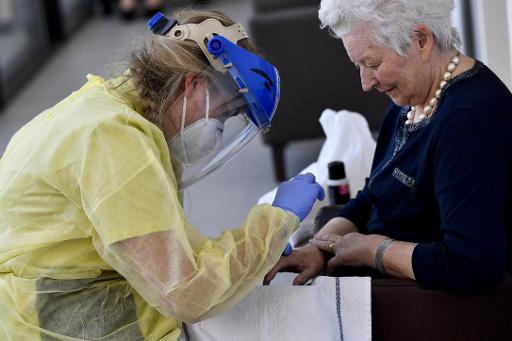A cross-sectional analysis of coronavirus test data in Belgium showed that approximately 75% of patients in residential care homes who were infected with the virus showed no symptoms.
Researchers analysed data received from laboratories between 8 April and 18 May, from 2,074 long-term care facilities in which 280,427 people were tested, of which 51% (142,100) were residents, and 49% (138,327) were staff members.
The study was published in The Lancet, a well-known peer-reviewed general medical journal, on 3 July.
The data comes from the mass testing campaign implemented in April by Belgium's health authorities. Tests, mainly nasopharyngeal and oropharyngeal swabs, were distributed by regional authorities, giving priority to centres with a higher number of cases. People's symptom status was determined by the medical professional taking the swab.
Of the total number of people who were tested, 8,343 tested positive for the virus, 5,390 of which were residents.
For 6,244 (74.8%) of the people who tested positive, no symptoms were reported. If the results were adjusted to only include residents, the percentage of people who tested positive without showing any symptoms increased slightly to 75.3%.
Related News
- 2 in 3 early Covid-19 tests show false negative, study shows
- Belgium shortens mandatory quarantine after Covid-19 exposure
- 'Know the risks' as lockdowns lift, expert warns
Additionally, women tested positive more often than men, and people with symptoms tested positive more often than those without.
In previous studies, results showed that the proportion of people who tested positive for the SARS-CoV-2 virus but showed no symptoms ranged from 20% to 88% of the tested population.
Researchers stated, however, that it is a possibility that individuals who had no symptoms at the time of the testing went on to still develop them later on. This means that the approximately 75% of people who tested positive but showed no symptoms likely also includes pre-symptomatic cases.
However, symptomatic and asymptomatic cases both have similar viral loads, meaning the transmission and spread of the virus is possible for both groups.
"Risk of under ascertainment of symptoms, although mitigated by the medical assessment, persists," the researchers concluded.
In residential care centres, these asymptomatic carriers of the virus could represent an important driver of the transmission, which can only be prevented by extensive prevention and control measures as long as the epidemic is ongoing.
Maïthé Chini
The Brussels Times

